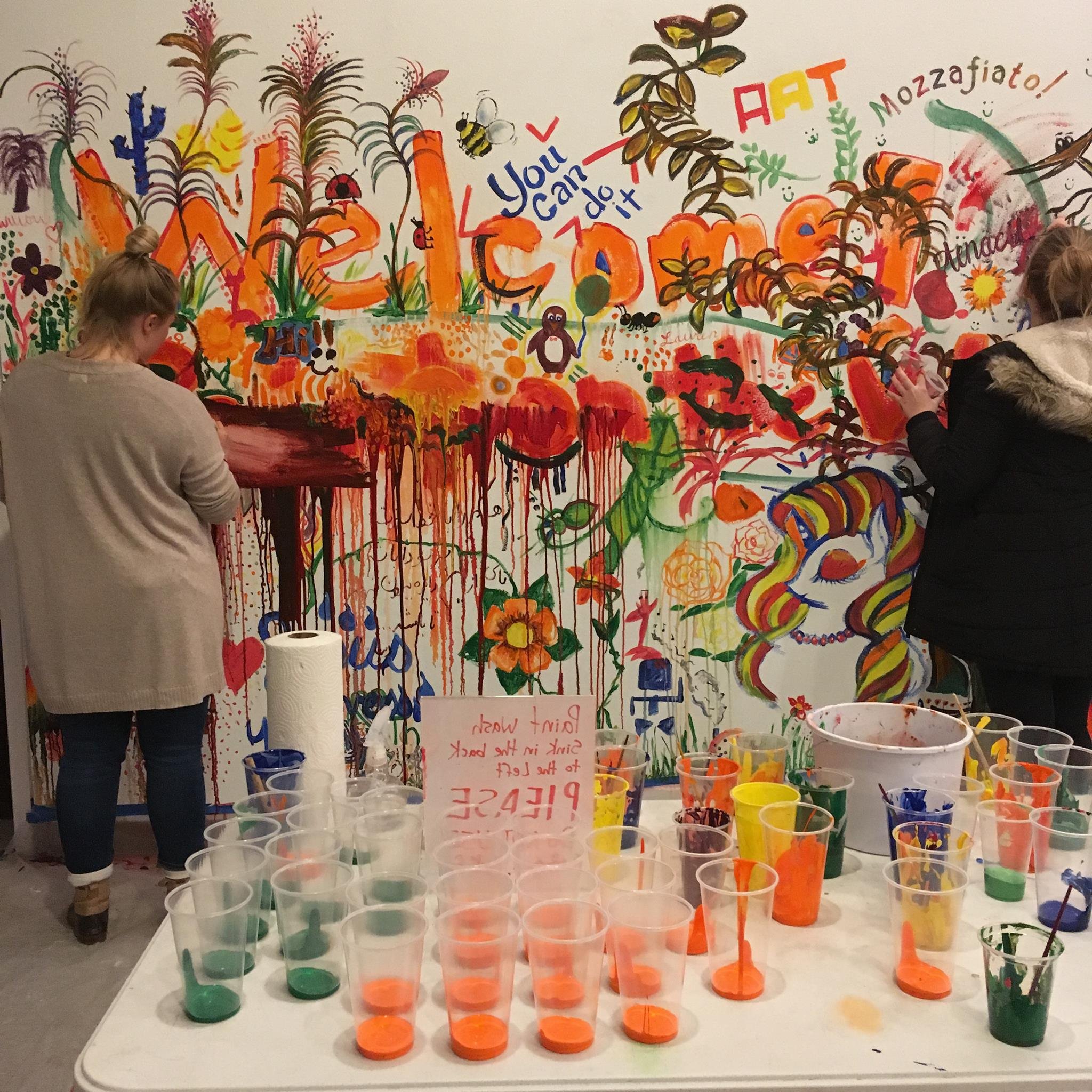Gathering Spaces: The How Matters
Last month, I was invited to participate in the Placemaking in Small & Rural Communities Virtual Conference hosted by the amazing Arts Extension team at the University of Kentucky. (They are the OG of community arts extension and rural placemaking.)
I thought I’d share a few key points from that presentation over the next few weeks, including 4 common themes that I’ve noticed in effective and inclusive rural placemaking efforts. I try to keep these top of mind while doing any creative community artwork as an insurance policy that I don’t get swept away in a project’s aesthetic or output, but stay grounded in the process.
If you’ve read me for a while, you’ll notice I beat the drum to each of these periodically, and well, that’s because they’re foundational to any decent community development effort. Like gospel-worthy-foundational.
Farmer’s Market stall, New Albany, Mississippi.
The 4 Corners of Ethical and Effective Placemaking (IMO)
1. Belonging is Crucial.
2. Work with What You’ve Got.
3. Art Reflects Us and Connects Us.
4. The How Matters.
Let’s start with Belonging is Crucial. A lot has been written about the economic impact of art - how it can encourage folks to visit or move to our communities. Indeed. Yes. Important. But, in my opinion, what’s more important is the impact that art can have on the quality of life for the folks who already live and work in these places.
As a community arts specialist for ISU Extension and Outreach, I’m grateful to work with and learn from sociologists, community planners, and designers, particularly about community development. Since 1994, ISU has connected with 99 small towns (defined as fewer than 10,000 residents) through the Iowa Small Town Poll, striving to understand what conditions create and sustain high quality of life in small communities.
A surprising trend shows that income level and industry has less to do with quality of life. According to this 25-year study, two of the things that seem to matter more are high levels of local civic engagement and a strong sense of community belonging.
Not your run-of-the-mill shed.
The City of Elma, Iowa (pop. 450) built this horse and buggy hitching post outside the local medical clinic to accommodate the community’s Mennonite population.
Much of this is intuitive. Let’s consider belonging for a sec.
Imagine spending time with a good friend or colleague. You can totally be yourself around that person. That person remembers your stories, lights up when you enter a room, and invites you places. How do you feel and how would you act spending time around that friend?
You’d probably feel pretty good. You’d probably feel confident and supported, like you could try new things, take some risks, be your best self.
Now imagine spending time with someone who you don’t think likes you very much. Maybe they may you or ask you way too many pointed questions or roll their eyes at you. Maybe they interrupt you. How would you feel? And then how may you act? You may get pretty quiet, feel insecure, shut down.
Communities and places can affect us the same way.
They can make us feel supported or unsupported.
Warm and fuzzy like this building, or cold and alienated like a concrete jungle.
Intertwine Community Yarn Bomb, Ames, Iowa. 2016.
Some ways we may feel unsupported are: not seeing ourselves represented in community leadership. not recognizing our stories or our histories or even our language anywhere.
So how do we get more deliberate in creating belonging? Let’s look at the research.
I’m going to get a little academic-y here for a sec, so forgive me.
A fancy term for belonging is Social Capital. And there are two types of social capital to understand here:
Bonding:
Bonding occurs among folks who have a lot in common, like a family, a place of worship, or a cultural group.
These people feel close and connected because they have shared interests, values, and histories.
The “us” game is strong here. The shadow side of “us” naturally creates a “them.” Bonding social capital is extraordinarily common in small communities and organizations, so much so that newcomers can remain perpetual outsiders and never feel at home.
Glimpses of the folks of Perry, Iowa. Perry Photography Project, 2016.
And Bridging:
Bridging connects groups of dissimilar people in a community.
It’s grounded in purpose and can result in collective action and forward momentum in a community.
We love bridging. Yay!
So the goal here is to always strive to create more bridging in your community.
How do we do this? According to some research, bridging can be increased by regular, face-to-face, positive interactions with folks. So as you delve into improving your public places and gathering spaces, I encourage you to create opportunities for folks to get together, regularly, to have a good time.
PS - On Tuesday, the University of Kentucky launched the Rural America Placemaking Toolkit, a one-stop shop for all your rural placemaking needs, including the many definitions of what placemaking IS, WHY it matters, and HOW to get started.
PPS - I’ve been on a kick sending postcards that share stories of individuals making their towns better places to live. Want one?





